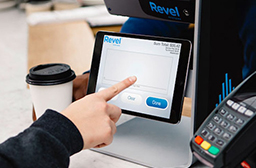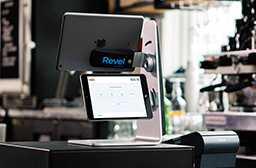10 Practices of Thriving Quick Service Restaurants
What does it take to be successful in the quick service industry? We looked at thriving Revel clients and pulled out common practices that are helping restaurants stand out and succeed.

Diners have been eating on-the-go for years, and the industry has noticed. With steep competition, it’s harder than ever for restaurants to stand out from the crowd. However, there are some essential practices operators can employ to ensure they’re managing a thriving quick service restaurant (QSR). Read on to learn more!
1. Thriving independent restaurateurs focus on systems

A thriving quick service restaurant runs efficiently and repetitively, like a well-oiled machine. Systems and procedures must be set in place in order to keep all of the moving pieces running smoothly.
Focus on start-of-day and end-of-day processes. Outlined steps that detail the processes an employee should follow prior to the open and following the close of business should be available to your employees. Document everything from turning on the lights and air conditioning in the morning through counting out the till at night. Print a stack of checklists. Or better yet, use POS software like Revel that can set end of day requirements.
Meticulously manage inventory. From understanding how much of every ingredient goes into items on your menu to knowing what your average waste is, you should focus on knowing the ins and outs of your inventory. And you should base decisions on this information, but we’ll get to that later.
Master administrative processes. This includes everything from accounting to employee scheduling. It’s important to plan and keep a regular schedule to complete all of the management and administrative processes that are necessary to keep things moving.
2. Thriving independent restaurateurs emphasize speed
A key factor in the rise in popularity of quick-service restaurants is the speed of service. Customers value the ability to get a tasty meal without the slowdown of a full-service dining experience. In order to achieve speed, a thriving quick service restaurant should focus on:
Front-of-House Tech for Speed. Your POS platform, diner relationship tools, and new technology (like self-service kiosks and mobile order takers) enable you to deliver the kind of service that lives up to the quick service name.
Back-of-House Tech for Speed. Investing in the right kitchen technology plays a big role in the service you deliver to customers, too. If orders are read off a piece of paper or worse, just said out loud, there is too much room for error.
Connecting the two. If your POS platform is awesome, but your back-of-house process bogs service down, there’s room for improvement. Through connected technology that enables you to automatically prioritize orders, you’re able to optimize operations and speed up your speed of service.
3. Thriving quick service restaurateurs revolve their marketing around a CRM

The use of a customer relationship manager (CRM) to capture customer data and then use that information to engage customers plays a role in turning one-time customers in repeat diners. This is especially true for QSRs as business depends on repeat diners.
Utilizing your CRM information for marketing purposes is smart marketing. It costs far less to market to existing customers than it does to go out and attract new ones. So by reminding diners why they love your famous burgers or chicken sliders with a fun promotional email, you’re engaging in free marketing that is much more cost-effective than the money spent on advertising campaigns. Similarly, by engaging with your diners on social media, your posts are a simple no-cost method to keep your restaurant top of mind.
4. Thriving quick service restaurants know their facts and figures

In order to operate at your highest potential, you should utilize reporting and analytics to understand the inner workings of your business and your business performance. To do this, you should regularly track:
Sales Reports Manage your overhead with cost of goods and regular sales reports to understand:
- Hourly sales numbers
- Payment type distribution
- Top and bottom selling products
- Average check size
Inventory Reporting Maintain a real-time view of inventory to identify your most profitable menu items, learn where you can reduce waste, and costs vs. profits on all of your items with reports like:
- Ingredient inventory logs
- Product inventory
Labor Reporting Track employee productivity and measure employee costs against sales revenue. Optimize your labor to better align with business trends to reduce overspend with:
- Employee profit reports
- Hourly labor facts
- Commissions
5. Thriving independent restaurateurs are good bosses

High employee turnover can be an issue for a quick service restaurant. The time and money required to find and train new team members is often overlooked, but can be a real problem for businesses. The best way to avoid that is by being proactive and making sure that you support your employees and follow practices that encourage low turnover.
Training
It’s important to properly train new employees when they join the team and provide ongoing training to keep employees performing at their best.
Revel iPad POS system has a training mode or “Test Mode” that makes it easier to train new employees, or brush up on things you are not familiar with within the POS platform. This safe environment enables your team to complete tests and practice transactions, and not have to worry about the transactions saving or showing up on real reports.
Set Processes and Systems
Bringing us back to the first point, by establishing processes for your team to follow, you are providing the structure that enables both your restaurant and your employees to thrive. Nothing is worse than when employees have no idea what they’re supposed to be doing! Create role structure and processes for your team to follow.
Tips
If your team is putting in work that brings in tips, you should be paying them out appropriately. Utilize a POS platform that keeps track of tips and makes it easy to pay out our tips, whether you pay out individually or pooled.
And if the tips aren’t coming in yet, add technology that will boost tips! Customer display systems (CDS) help with order accuracy, encourage tipping and increase the amount employees receive.
6. Thriving independent restaurateurs precisely manage inventory
Ask yourself, do you know how much flour or butter you use each week? Do you know what your weekly waste is? Do you consistently have products that spoil? The way to combat and keep your food waste low is to actively manage inventory levels. Keeping up with your inventory has many benefits including enabling you to:
- Accurately track your business’s inventory
- Real-time data gives you the power and flexibility to make informed business decisions
- Avoid overstock and subsequent waste
A thriving quick service restaurant must have the ability to predict when it is time to order more inventory, and leverage automation for low inventory alerts.
7. Thriving quick service restaurants focus on hospitality

While it may not seem like an integral part of quick service, hospitality plays a big role in earning return customers. And it takes on a different form in the fast-casual industry, the attention you pay to diners — though brief must be meaningful.
Cater to Customer Requests
Giving your customers the ability to choose is one form of hospitality. One reason there has been a surge in build-your-own restaurants, is because it gives customers the ability to build the exact meal they desire, definitely hospitable.
Speedy Hospitality
While hospitality often evokes a sense of leisure or relaxation, hospitality can also be shown in a speedy manner. By providing a comfortable space that encourages customers to feel welcome to enjoy their sandwich or salad, and relax for a few minutes before getting on with their day — is today’s hospitality. Similarly, providing the right technology that enables customers to get in and out on their own time is to be a hospitable restaurant. Contactless payments, self-service kiosks, and mobile order takers give customers the tools to order and pay in ways that are convenient for them.
Providing many options gives customers the ability to order in the way that suits them.
A Customizable Experience
A thriving quick service restaurant is unique in that it can offer variety. Curry Up Now, a fast-casual chain serving Indian street fare, takes full advantage of that and caters to customers during the lunch rush, families, and even girl’s night out.
Here’s why:
“We want people to come in and have a good time, we want people to be comfortable, you know. Are you coming in for your lunch break where you only have an hour and you gotta rush in and rush out? You want to have a good meal. Or, do you want to come in after work, have a few drinks, and laugh with some friends? We like to tailor our experience to the guest. That is a unique option we have as a fast-casual restaurant. We’re not pigeon-holed into just that one way we can do things.”
8. Thriving independent restaurateurs listen to their stakeholders
Listen to Your Customers Are you using Yelp to take comments from your customers? (If not you should be!) Review sites are a valuable tool for feedback and gaining new customers. You should be regularly checking your feedback to compile comments and feedback. Both the grievances and the praise provide valuable and actionable feedback for your business. Diners can be your best advocate, and if there is room for improvement, a source for vocal criticism. Monitor your reviews and take action!
Talk to Your Team Give your employees the opportunity to provide constructive feedback. Be it one on one meetings, a group conversation, or written surveys – your team may have suggestions for your business and feedback on why they love coming in every day!
9. Thriving independent restaurateurs are always looking ahead

From mobile payments to restaurants that are completely self-service, restaurants are always looking for the next cutting-edge technology that will set them apart. While it’s not necessary to jump on board with all of the newest technology, keeping abreast of new technologies, and implementing the right technology is smart.
Another way successful restaurateurs look ahead comes with an understanding of their current challenges. With a clear picture of business health, it becomes possible to map out a plan to overcome those obstacles. Robust reporting and analytics tools make this possible. The reporting tools previously mentioned, can and should be used to guide business decisions. Sales numbers, inventory reporting, and employee performance can all be guiding numbers to help you improve business.
10. Thriving quick service restaurants grow
Whether the focus is growing the revenue of an existing establishment or growing to multiple establishments, growth is an important aspect of a thriving quick service restaurant. By providing the right tools to efficiently conduct business, best serve customers, and maximize processes to increase revenue, Revel strives to make growth possible for QSRs.



